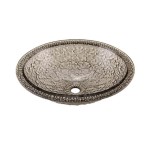Standard Bathroom Sink Height: A Comprehensive Guide
The bathroom sink, a ubiquitous fixture in modern homes and public spaces, plays a vital role in maintaining hygiene and facilitating daily routines. An often-overlooked aspect of bathroom design is the height of the sink. The standard bathroom sink height, while seemingly a minor detail, significantly impacts user comfort, accessibility, and overall bathroom functionality. This article delves into the established standard, its rationale, considerations for deviations, and the implications of choosing an inappropriate sink height.
The term "standard bathroom sink height" generally refers to the distance from the finished floor to the top edge of the sink. This measurement includes the sink bowl itself, along with any countertop or vanity base upon which it rests. Understanding this standardized measurement is crucial for homeowners, contractors, and interior designers alike, ensuring a functional and aesthetically pleasing bathroom space.
Deviation from the standard height can arise from various factors, including the specific needs of the users (e.g., children or individuals with mobility impairments), the overall design aesthetic of the bathroom, and the type of sink being installed. Therefore, a thorough understanding of the standard and its potential adaptations is essential for informed decision-making during bathroom renovations or new construction projects.
The Established Standard: Measurement and Rationale
The universally accepted standard bathroom sink height is typically between 30 and 36 inches (76 to 91 cm) from the finished floor. Within this range, a height of 32 to 34 inches (81 to 86 cm) is commonly considered the ideal midpoint for most adults. This measurement is not arbitrary; it's the result of ergonomic considerations aimed at minimizing strain and maximizing comfort during common bathroom activities such as washing hands, brushing teeth, and shaving.
The rationale behind this specific height range stems from anthropological data regarding average human arm and torso lengths. The goal is to position the sink at a height that allows for a comfortable, slightly bent-over posture, preventing excessive reaching or stooping. Reaching too high can lead to shoulder and neck strain, while stooping too low can cause back pain. The standard height seeks to minimize these ergonomic stressors.
Furthermore, the 30-36 inch range accommodates a reasonable variety of body sizes. While not a perfect fit for everyone, it provides a generally comfortable experience for the majority of adults. By adopting this standard, builders and designers can create bathrooms that are functional and accessible to a wide range of users without requiring individual customization in every instance.
The prevalence of this standard also contributes to its ease of implementation. Fixtures and vanities are readily available in standard sizes, simplifying the selection and installation process. Deviation from the standard, while sometimes necessary or desirable, may require custom-built cabinetry or modifications to existing plumbing, adding to the cost and complexity of the project.
Factors Justifying Deviation from the Standard
While the standard bathroom sink height offers a comfortable solution for many, certain circumstances warrant deviation from this norm. These factors often relate to the specific needs and characteristics of the user(s) and the overall design intent of the bathroom.
One significant consideration is accessibility for individuals with disabilities. The Americans with Disabilities Act (ADA) establishes guidelines for accessible bathroom fixtures, including sink height. ADA-compliant sinks typically have a maximum height of 34 inches (86 cm) and require sufficient knee clearance underneath to allow for wheelchair access. These guidelines ensure that individuals using wheelchairs or other mobility devices can comfortably use the sink.
Another factor is the presence of children in the household. A standard height sink may be too tall for young children to reach comfortably, potentially leading to splashing and difficulty maintaining proper hygiene. In such cases, a lower sink height or the addition of a step stool can be beneficial. Alternatively, a double vanity with sinks at different heights can accommodate both adults and children.
The design aesthetic of the bathroom can also influence the choice of sink height. Vessel sinks, which sit on top of the counter, inherently require a lower vanity height to maintain an overall comfortable reach. Conversely, undermount sinks allow for a taller countertop, potentially resulting in a slightly higher overall sink height.
Personal preference also plays a role. Some individuals, particularly those who are taller than average, may find the standard height too low and prefer a slightly higher sink. Others may have pre-existing back problems that necessitate a particular sink height for optimal comfort. It's essential to consider these individual needs when selecting a sink height, especially in master bathrooms or ensuites where the users are well-known.
Implications of Incorrect Sink Height
Selecting an inappropriate sink height can have significant implications for user comfort, long-term health, and the overall functionality of the bathroom. A sink that is too low forces users to stoop excessively, leading to back pain, neck strain, and potential discomfort in the shoulders. Over time, repetitive stooping can contribute to chronic back problems and musculoskeletal disorders.
Conversely, a sink that is too high requires users to reach upwards, causing strain in the shoulders and arms. This can be particularly problematic for individuals with limited mobility or pre-existing shoulder issues. Reaching too high can also be difficult for children, potentially leading to accidents or improper hygiene practices.
Beyond physical discomfort, an incorrect sink height can also impact the functionality of the bathroom. A sink that is too low may be difficult to clean effectively, as users may struggle to reach all areas of the bowl and surrounding surfaces. A sink that is too high may cause water to splash excessively, making a mess and potentially damaging surrounding surfaces.
In addition to ergonomic and functional issues, an inappropriate sink height can also detract from the overall aesthetic appeal of the bathroom. A sink that is disproportionately high or low compared to other bathroom fixtures can look awkward and disrupt the visual harmony of the space. This can be particularly noticeable in smaller bathrooms where space is at a premium.
Therefore, careful consideration of sink height is crucial during bathroom design and renovation. Taking the time to assess the needs of the users, the overall design aesthetic, and the specific characteristics of the sink will help ensure a comfortable, functional, and aesthetically pleasing bathroom space for years to come.

How To Choose The Best Bathroom Sink Height A Complete Guide

How To Choose The Best Bathroom Sink Height A Complete Guide

What Is The Standard Bathroom Vanity Height Bfy Mirror

What Is The Standard Bathroom Vanity Height Bfy Mirror

What Is The Standard Bathroom Vanity Height Bfy Mirror

Ada Compliant Bathroom Restroom Accessories Laforce Llc

What Is The Standard Bathroom Vanity Height Bfy Mirror

Basin Sizes Toilet Shower Enclosure Bathroom Dimensions

What Is The Best Bathroom Mirror Height Cm

Bathroom And Toilet Standards Measurements Guide Post Digital Architecture







